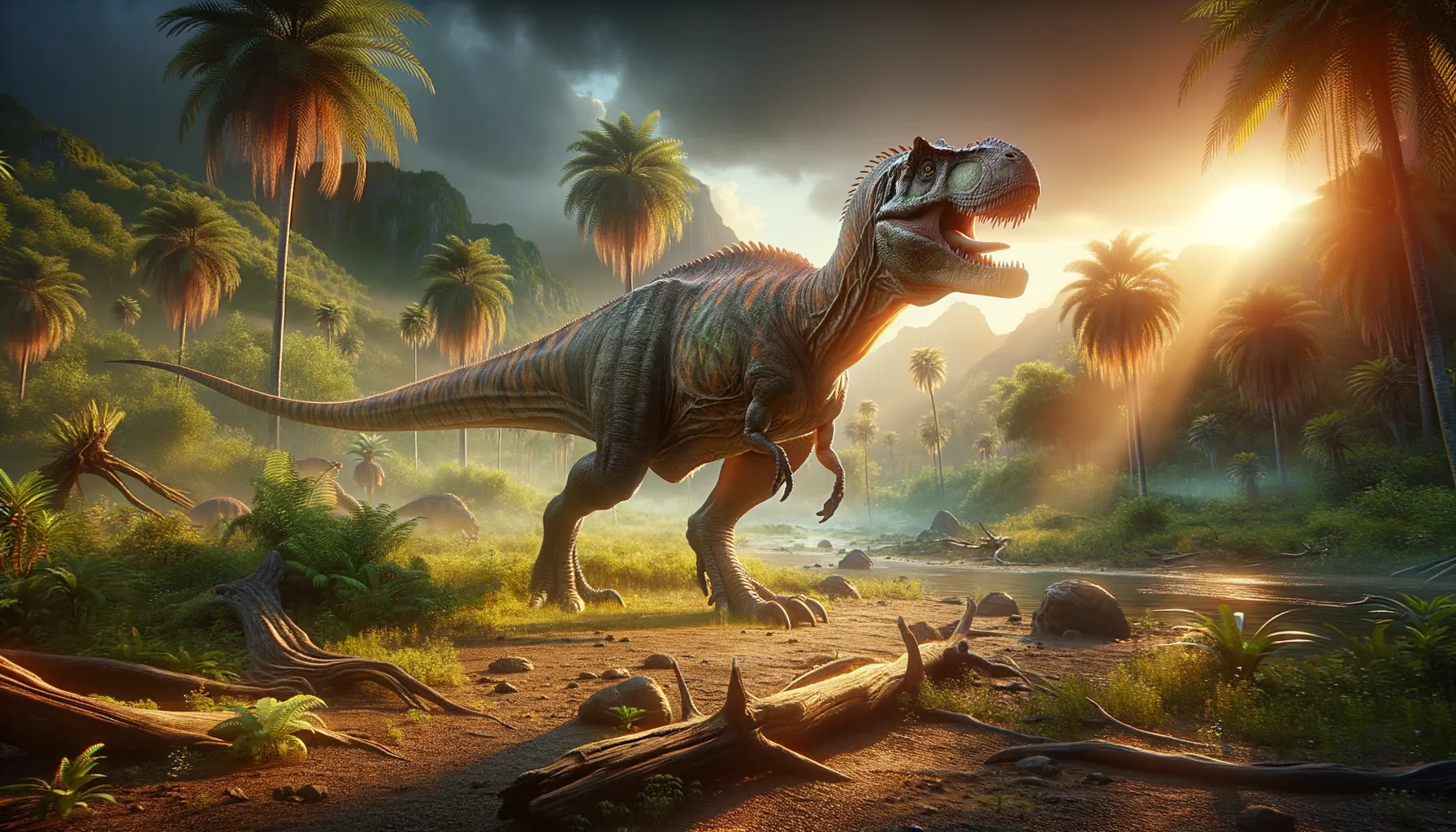
Kunmingosaurus
Explore the mysteries of the ancient past.
Period
Jurassic
Length
Roughly 4 meters long.
Height
Approximately 1.5 meters.
Weight
Around 200 kilograms.
Kunmingosaurus was a prehistoric herbivore that roamed the Earth during the Jurassic period. Known for its moderate size, it moved at a leisurely pace, navigating the lush landscapes of ancient Asia. Despite its discovery in the 1950s, much about this dinosaur remains shrouded in mystery, making it a subject of fascination for paleontologists seeking to understand the life and times of Jurassic creatures.
Diet
Kunmingosaurus primarily fed on vegetation, thriving on the lush plant life available during the Jurassic period. Its diet consisted of ferns, cycads, and conifers, which were abundantly present in its habitat.
Hunting
As an herbivore, Kunmingosaurus did not hunt for food. Instead, it relied on its ability to forage in dense plant-rich environments, using its size and weight to reach vegetation sources.
Environmental challenges
Kunmingosaurus faced various environmental challenges, including shifts in climate and the availability of its plant-based diet. Natural disasters like volcanic eruptions could have significantly altered their habitats, affecting food supply. Competition with other herbivorous species also posed a challenge, as they had to coexist and share the limited resources.
Speed
Moderate, likely not very fast.
Lifespan
Estimated to be several decades.
First discovery
Discovered in China in the early 1950s.
Fun Facts
- Kunmingosaurus is named after the city of Kunming in China, where its fossils were first discovered.
- It lived during the Early Jurassic period, which is about 190 million years ago.
- Kunmingosaurus was a herbivore, meaning it primarily fed on plants.
- This dinosaur was relatively small, estimated to be about 5 meters (16 feet) in length.
- It belonged to the sauropodomorph group, which eventually led to the giant long-necked dinosaurs.
- Kunmingosaurus is mostly known from partial skeletal remains, making it a bit of a mystery to scientists.
- Despite its limited remains, Kunmingosaurus helps researchers understand the evolution of early sauropodomorphs.
Growth and Development
Kunmingosaurus likely experienced a steady growth pattern, reaching its full size over several years. Young Kunmingosaurus were probably smaller and more vulnerable to predators, relying on adults for protection. As it grew, it developed stronger legs and more robust body structures to support its weight and lifestyle.
Habitat
Kunmingosaurus inhabited the lush, verdant regions of what is now modern-day China during the Jurassic period. Its environment was characterized by abundant vegetation, including forests and open plains. These dinosaurs adapted to a terrestrial lifestyle, navigating through these dense plant ecosystems in search of food.
Interaction with other species
Kunmingosaurus likely interacted with other herbivorous species in its ecosystem, competing for similar food sources. Predatory dinosaurs of the same era may have posed a threat, making alertness and group behaviors essential for safety. Coexistence with other species might have involved sharing or contesting territory.
Natural lifespan
Kunmingosaurus had a natural lifespan of several decades.
Reproduction
Kunmingosaurus was an egg-laying species, with reproductive cycles likely synchronized with environmental conditions. Adults may have provided care for young hatchlings to ensure higher survival rates. Nesting sites would have been selected for safety and proximity to food sources.
Social behaviour
Kunmingosaurus may have exhibited some level of social behavior, possibly living in small herds for protection and efficient foraging. Social interactions could have included communication through vocalizations or postures, essential for maintaining group cohesion and alerting of predators.
Fossil locations
Fossils of Kunmingosaurus have been primarily located in China, providing insights into the diverse Jurassic ecosystem. These findings have allowed paleontologists to piece together aspects of its lifestyle, anatomy, and environmental context. The specific sites of fossil discovery offer clues about ancient habitats and geography.
